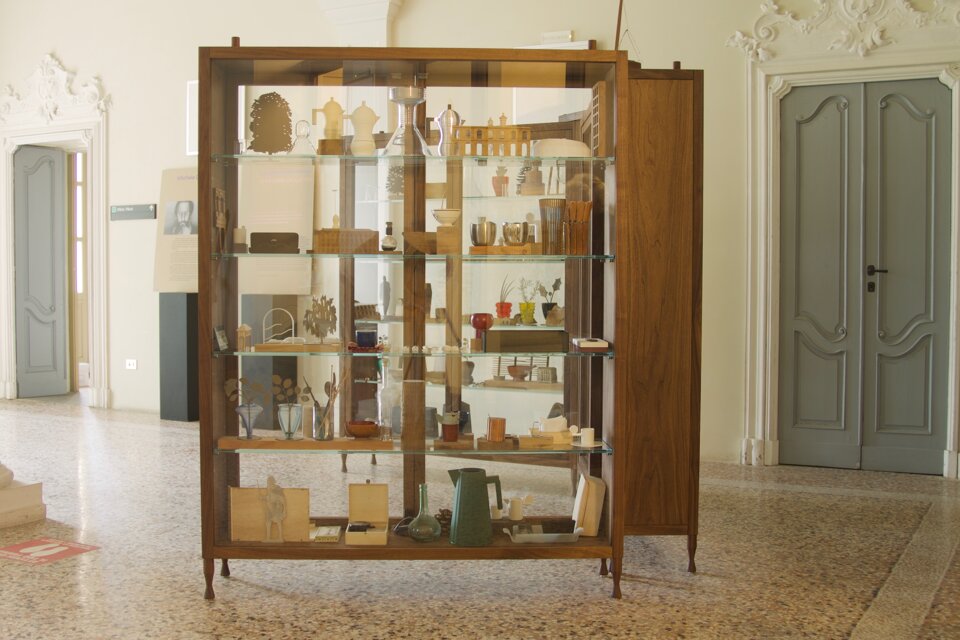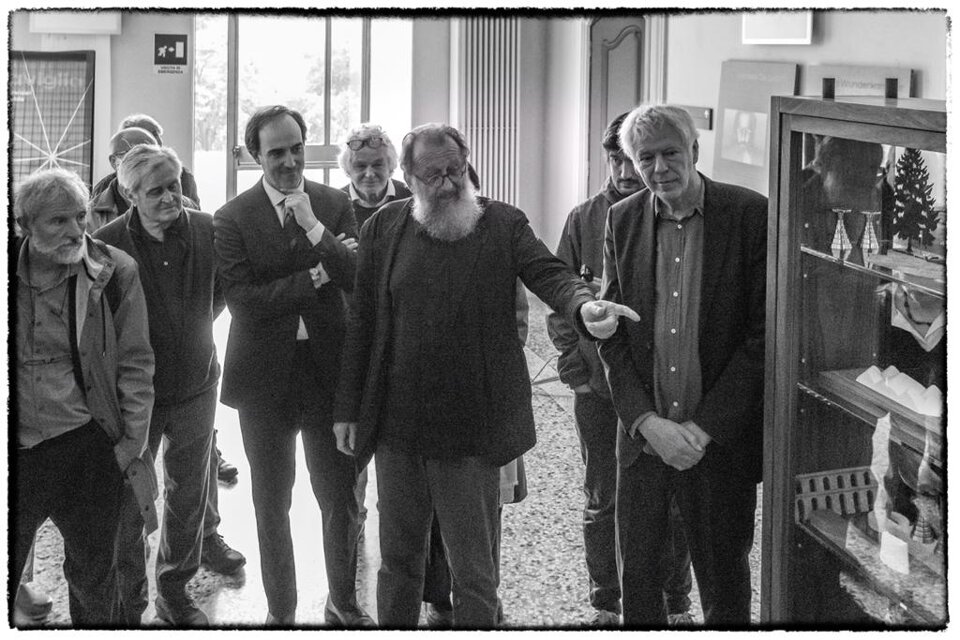postmaster@museumofanthropocenetechnology.org, via Leggiuno 32
2014 Laveno Mombello
Italia
Case III: “the Wunderkammer of Michele De Lucchi”
During the “Festival della Meraviglia” (Festival of Wonder, Laveno Mombello 12-28 May 2023) a small exhibition was inaugurated; small: the size of a jewel. It had the name “The Wunderkammer of Michele De Lucchi”. It was one of the many possible realizations of an idea that was born six years earlier, when the director of the Festival had the occasion to visit the archive of architect De Lucchi.

For the director, who has a background as a scientist, an archive was until then a chest of long drawers that hold folders with papers that have been read, of papers that still have to be read (usually the majority), sheets with calculations, graphs with the outcome of experiments, etc… In short, for the director an archive was a piece of furniture that you would have in front of you. One can thus imagine his surprise when he was invited to enter the archive of the architect: a long industrial hall with racks of several levels that ran towards the far end, towards the horizon of the hall. But even more surprising was that, while the architect was talking about the 2000 objects in his archive, none of them could be seen. What was seen, instead, were endless rows of carton boxes and wooden crates, small and large, with here and there a picture glued on the side of what was supposedly inside. Out of frustration probably the idea came about to open the boxes, take out the objects and start to make little installations with them. Not that the director would have done so with the architect, no; the idea was to bring in children and ask them to select the objects and make the installations. Why children? Because they make choices freely, without being constrained by categories that adults are stuck with. The idea was that these free and unconstrained choices would lead to set ups that would give a new more fundamental meaning to the objects in them, that a meaning would be given to the whole oeuvre of the architect, as well as to the nearly 50 years of history in which this oeuvre is embedded. Eventually the idea was considered unfeasible, unpractical, … where to get the children from, how to select them, for instance? So the idea was shelved together with the other boxes in the archive, and who knows that all those boxes do not contain any objects at all but only ideas …
Very recently, the idea surfaced again because a child was found that was not only willing but also able to select objects, make installations and give meaning. That he is a child was clear to the director, because he had seen the child in action; he had seen the child looking at things, asking simple questions like: where does that light come from, why this double reflection? It is a bit of a particular child, age-less, wearing glasses and having a long beard. The child is the architect himself… At a certain age, the challenge is not to remain young but to become a child again. Some people have no problem with that, because they have remained a child all of their life, and Michele De Lucchi is very likely one of them.
The architect eventually selected between 300 and 400 objects (nobody ever counted them) to exhibit them in transparent showcases that he had designed for the occasion. He wrote:
“When I was asked to make a Wunderkammer, I thought I would go to the studio and collect small pieces, samples, wood-carved models, 3D printed miniatures, and display everything without any order in a showcase, a kind of transparent micro-chamber. Disorder is part of order, so much so, that our wonderful planet created itself in the cosmic soup that is the universe. I have thus made my own chaotic and mysterious universe, my own personal "Cabinet of Wonders," where everyone is free to go fishing for the meaning of things.”

postmaster@museumofanthropocenetechnology.org, via Leggiuno 32
Laveno Mombello
21014
Italia